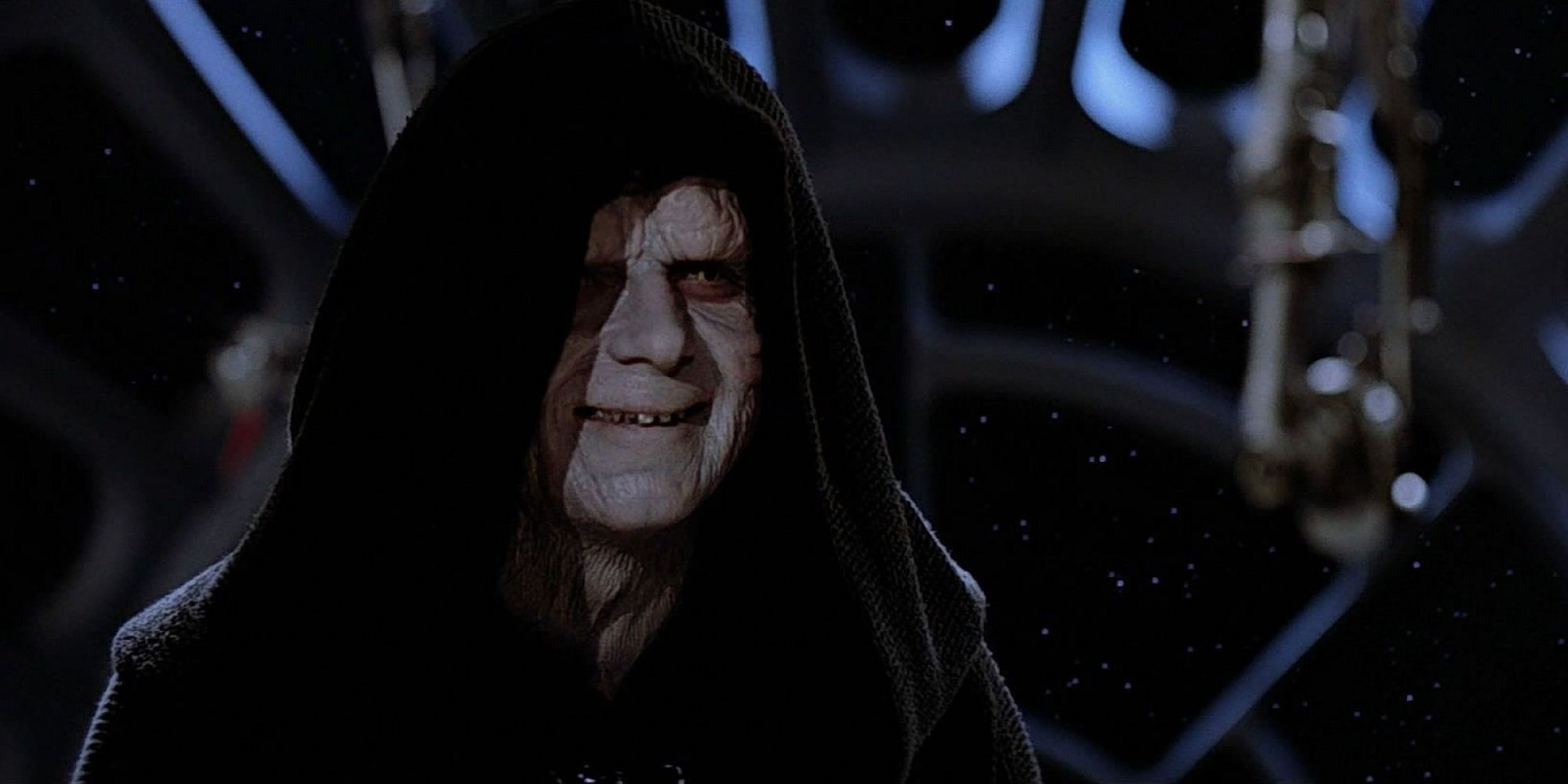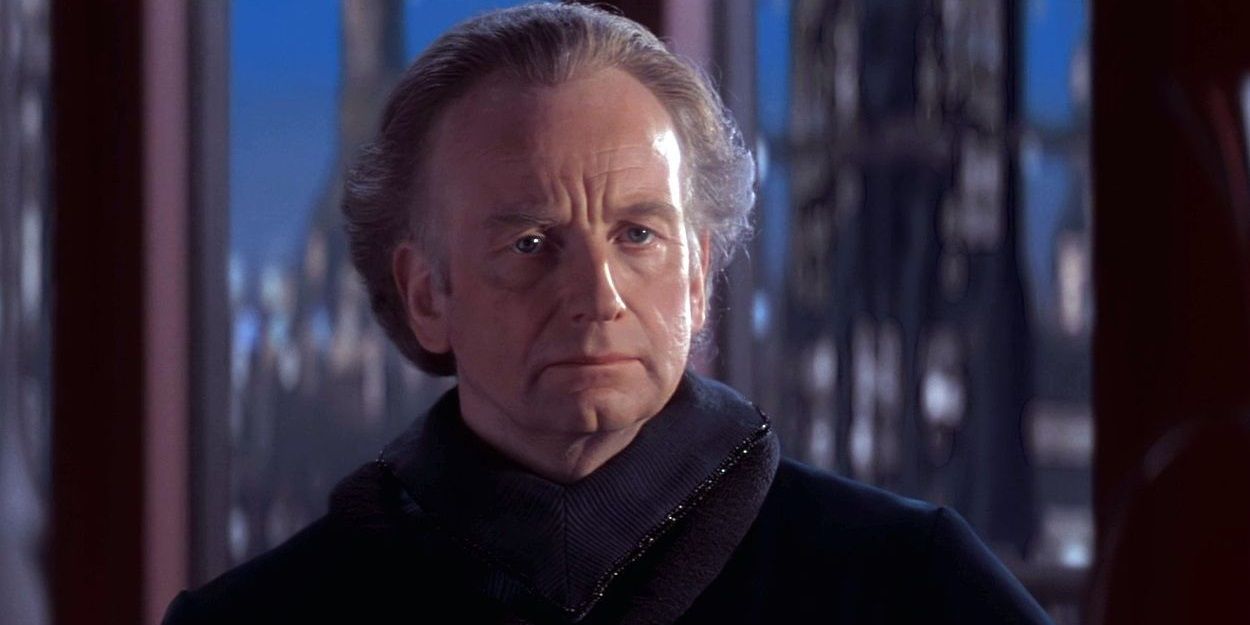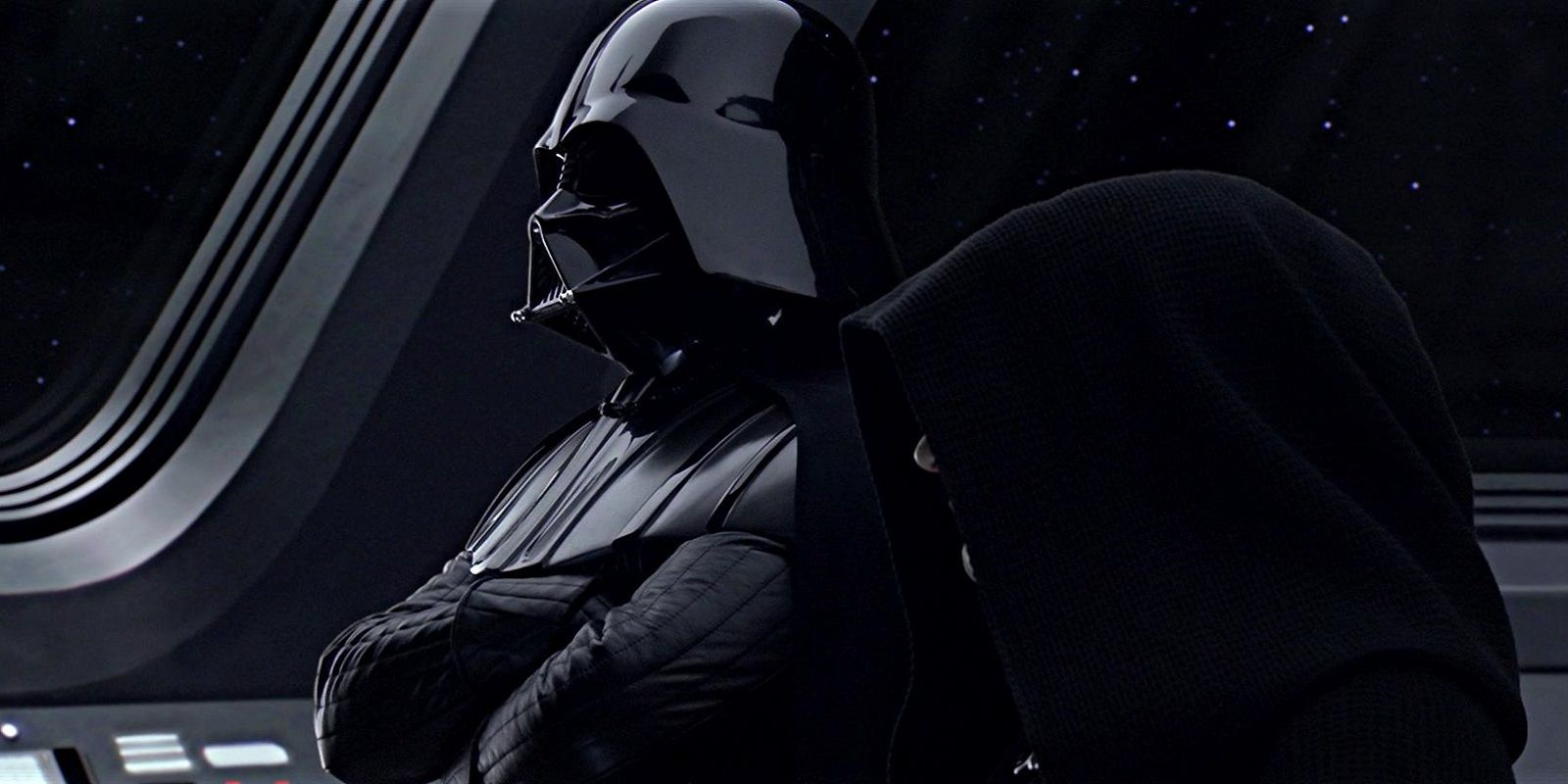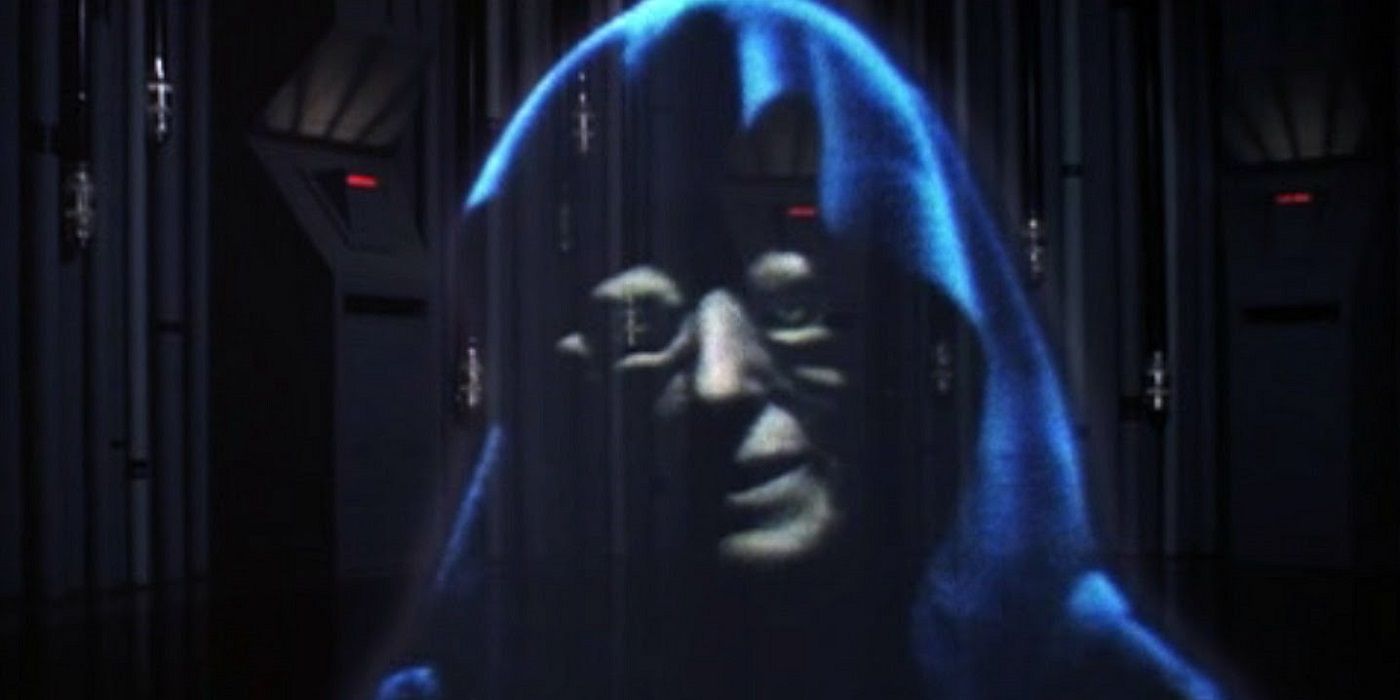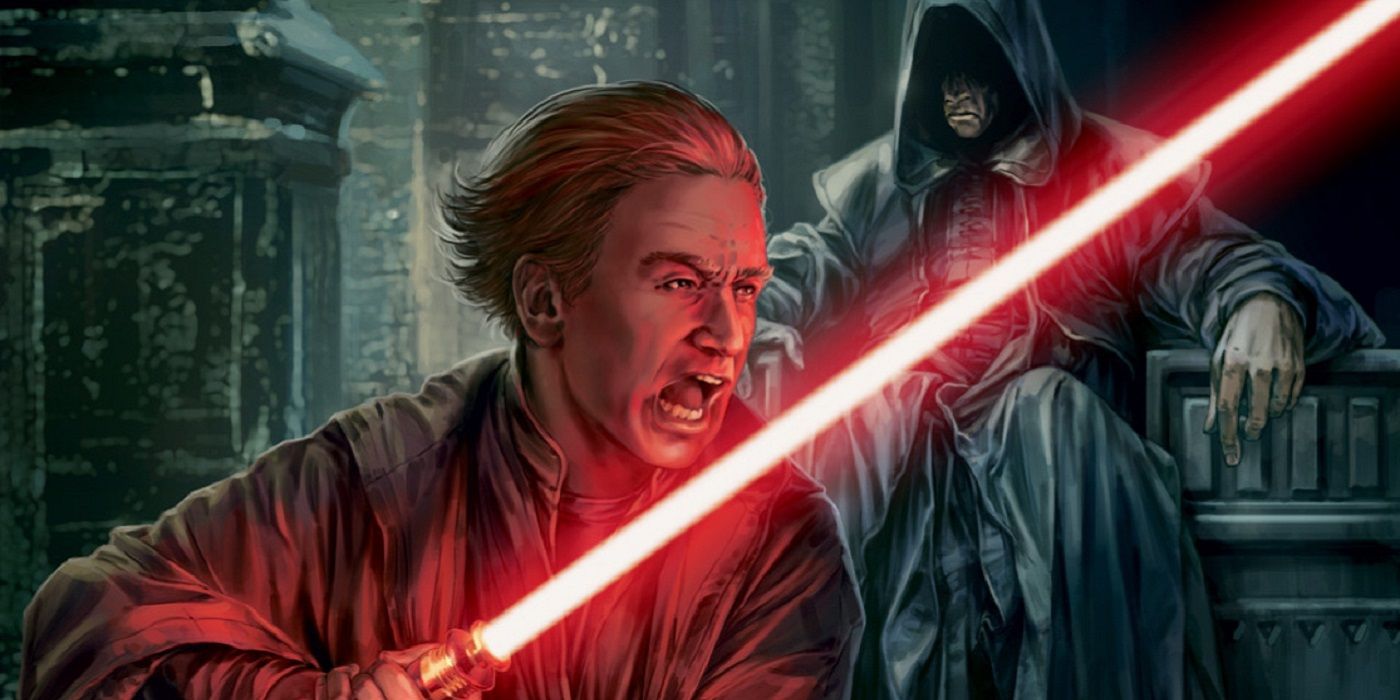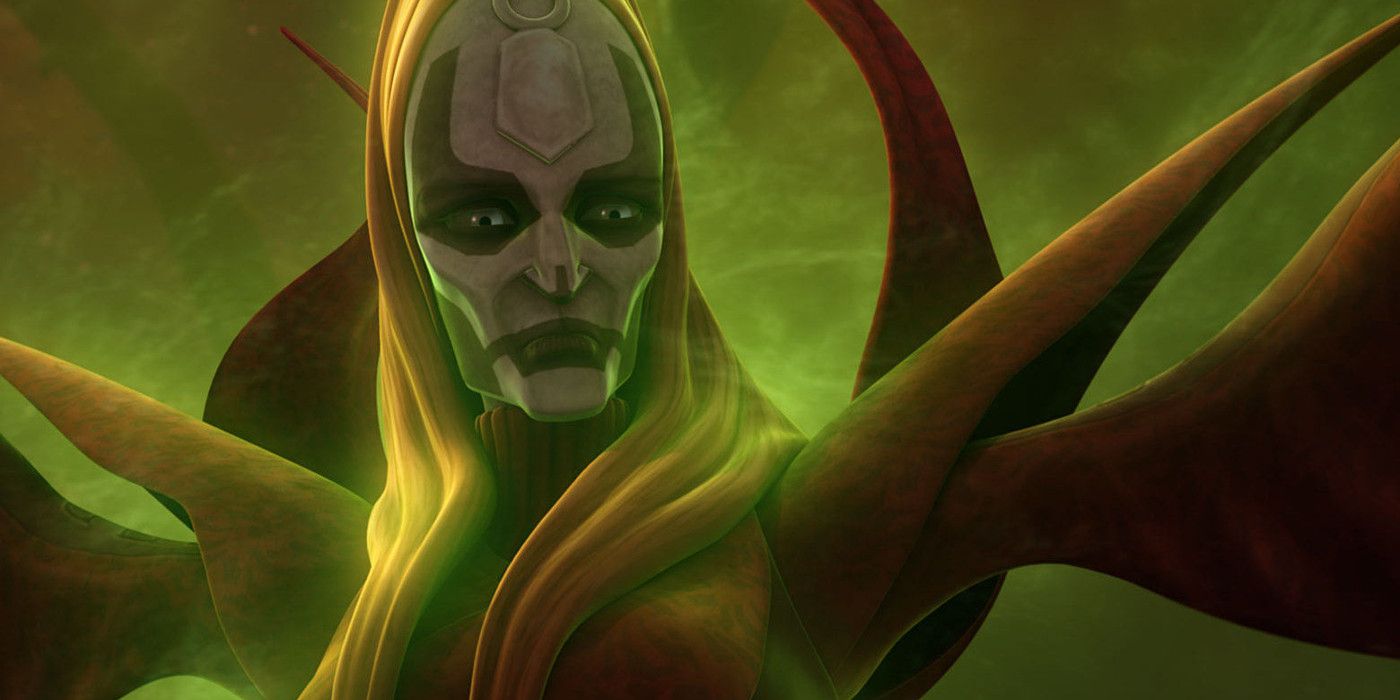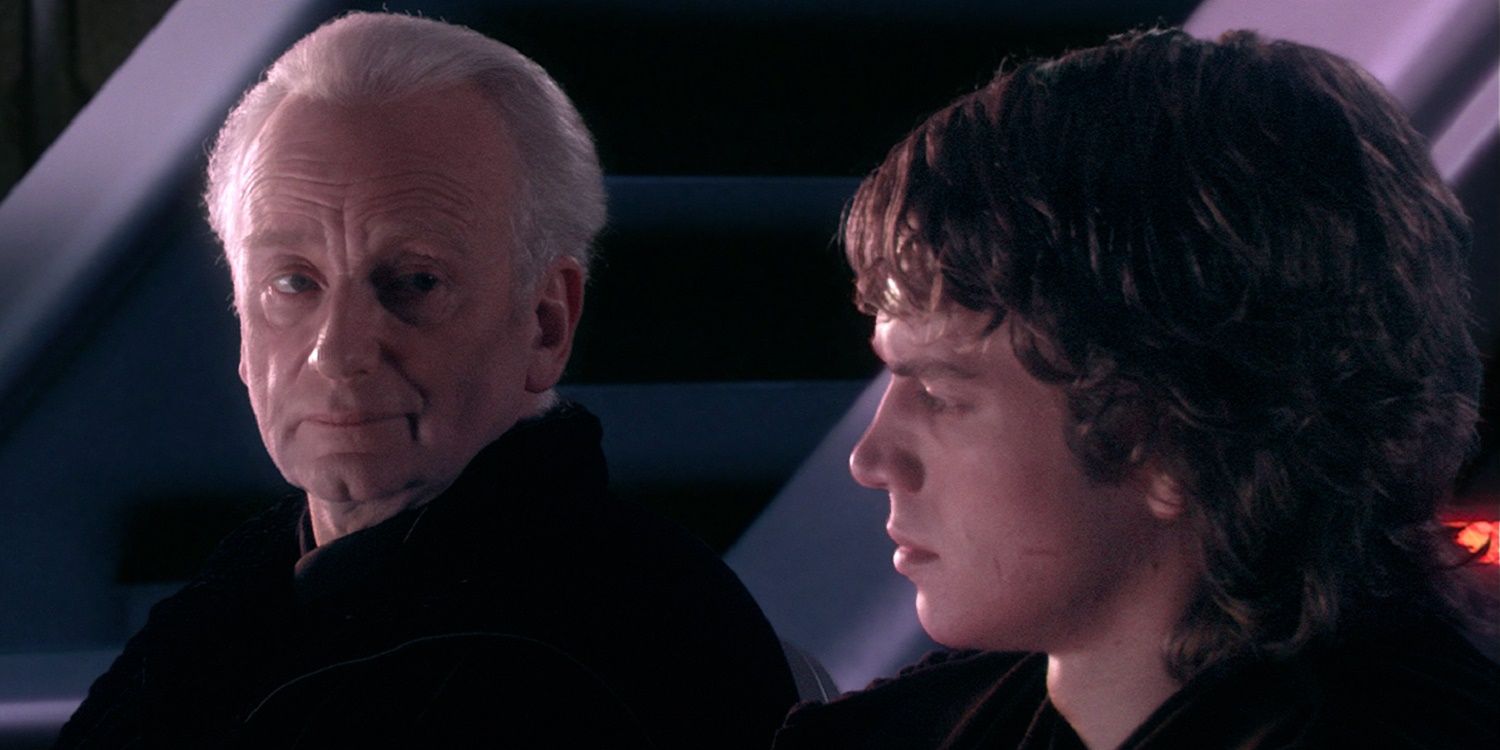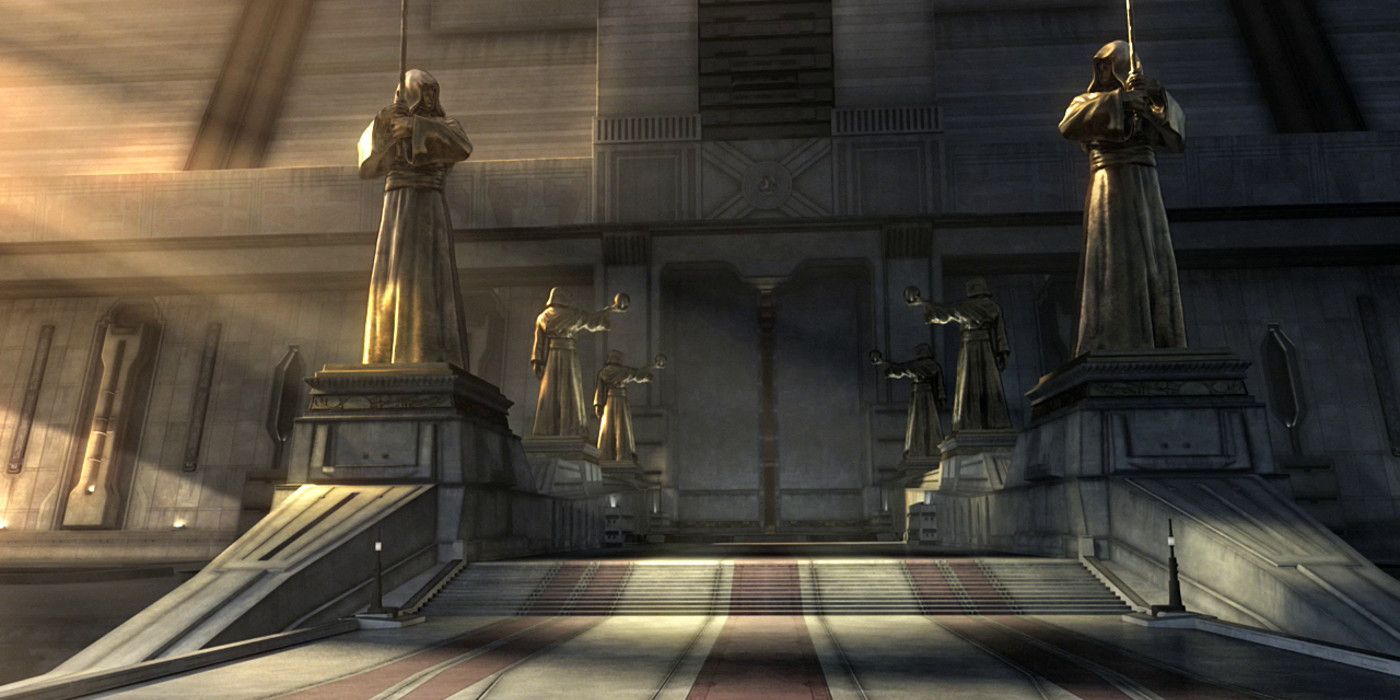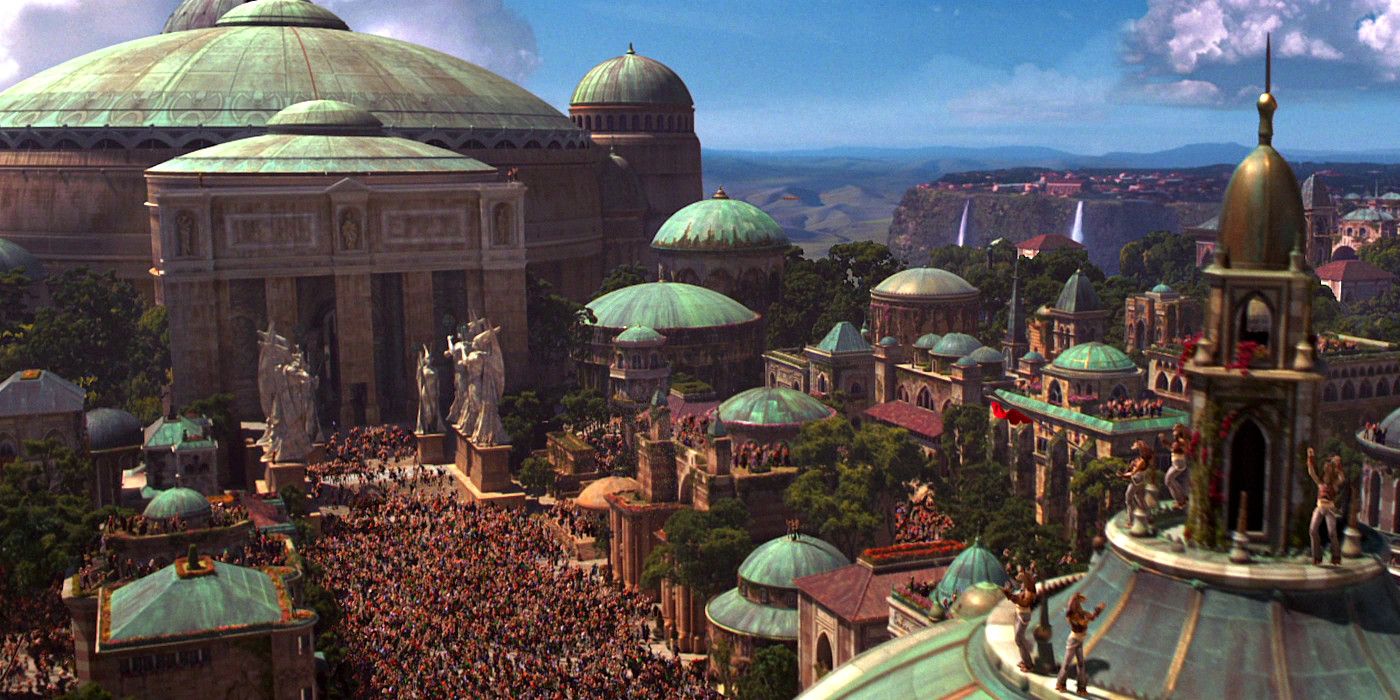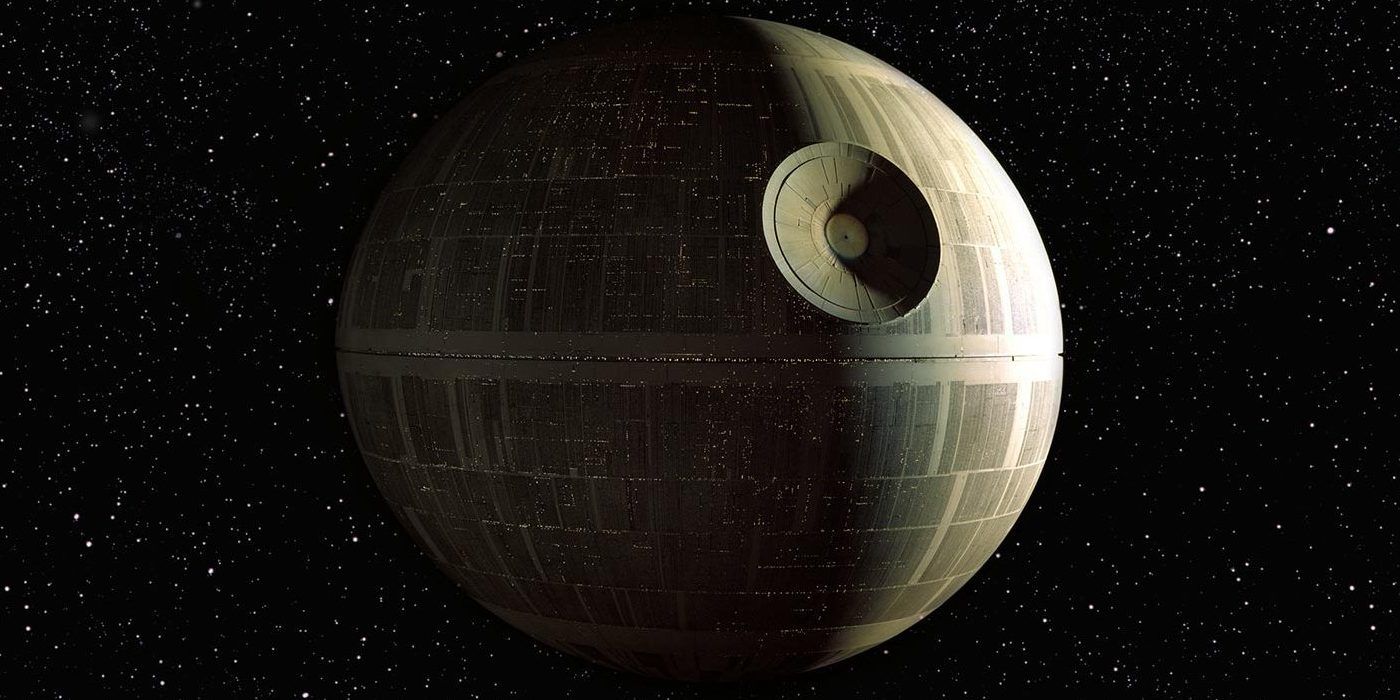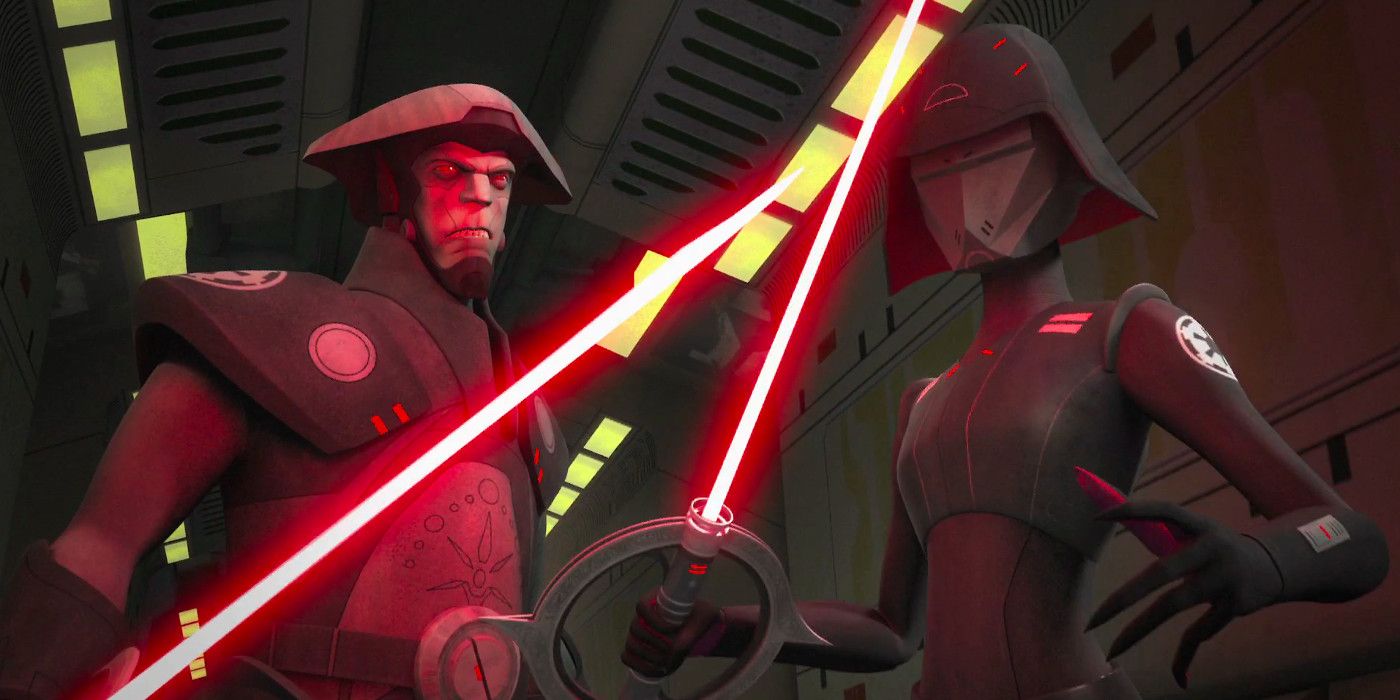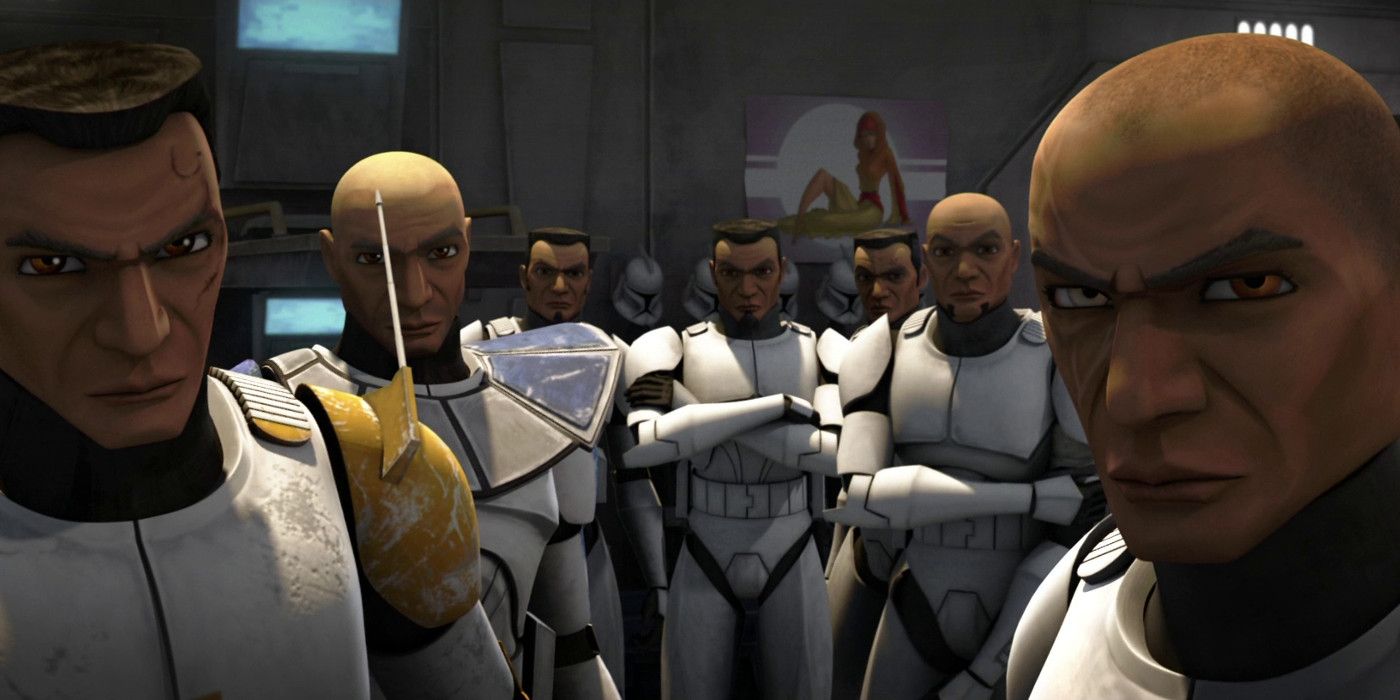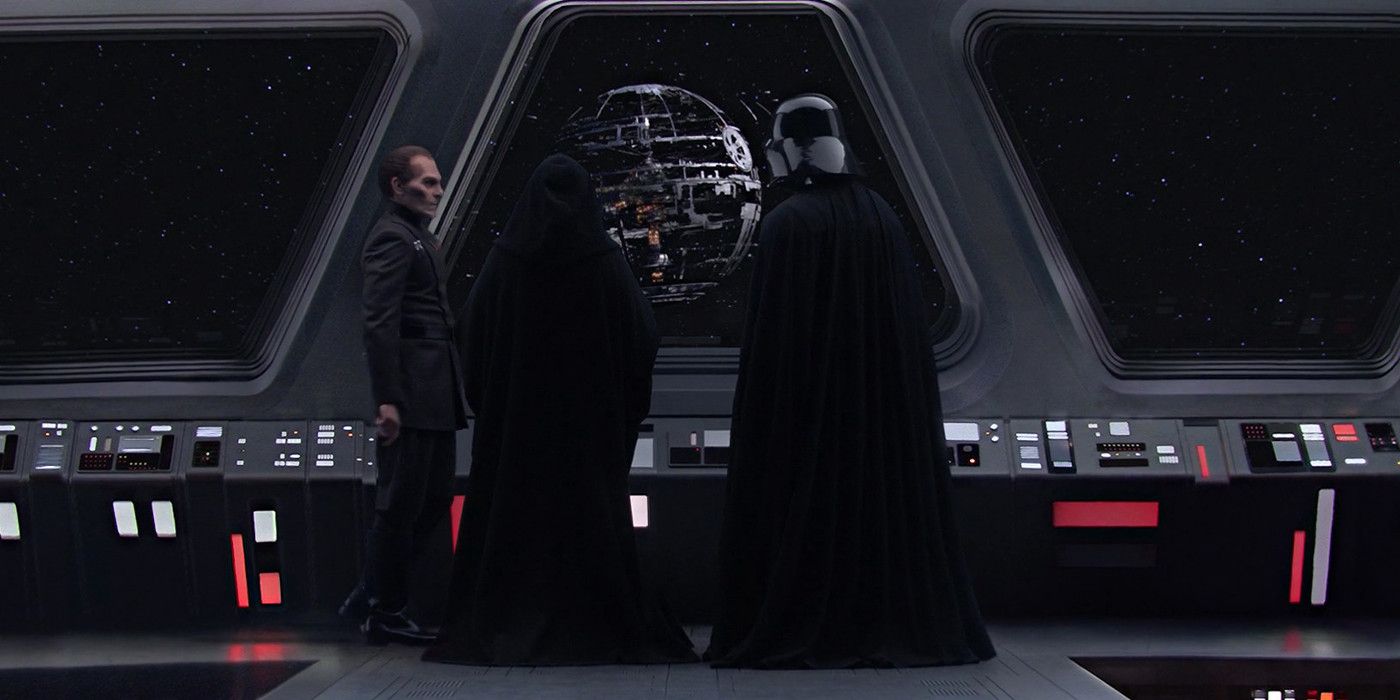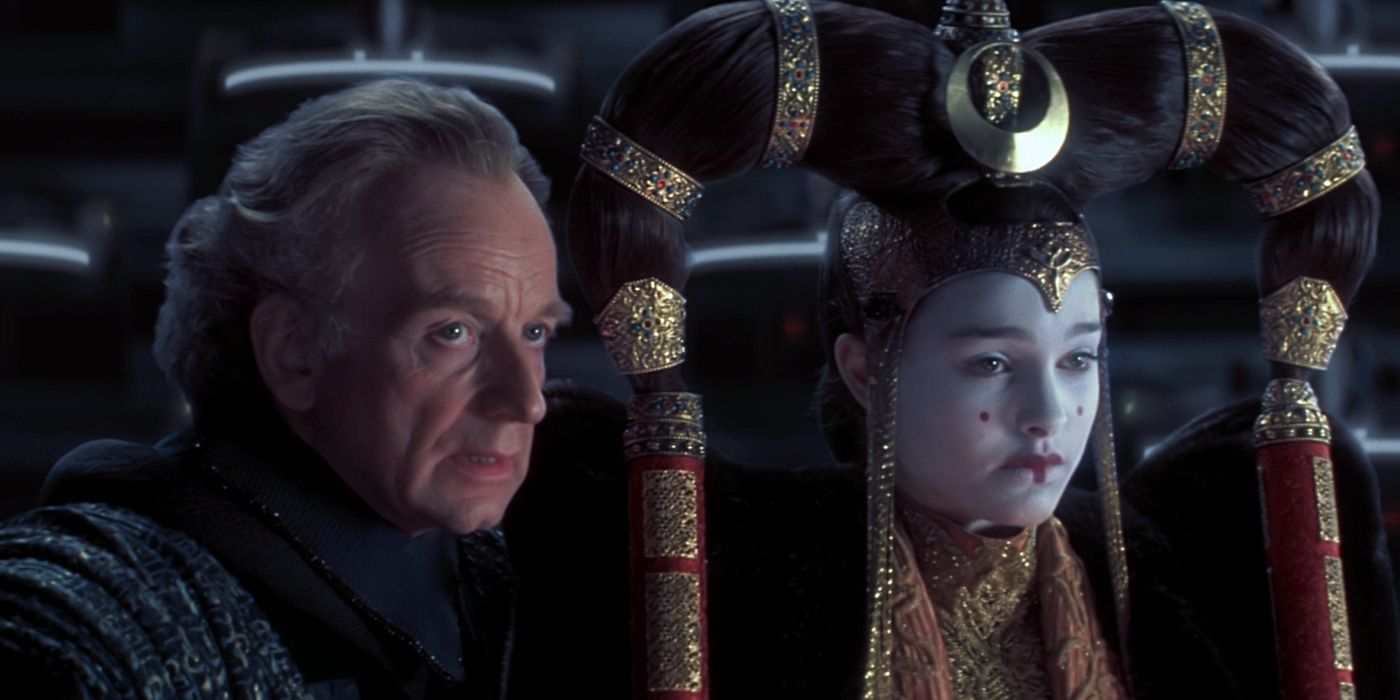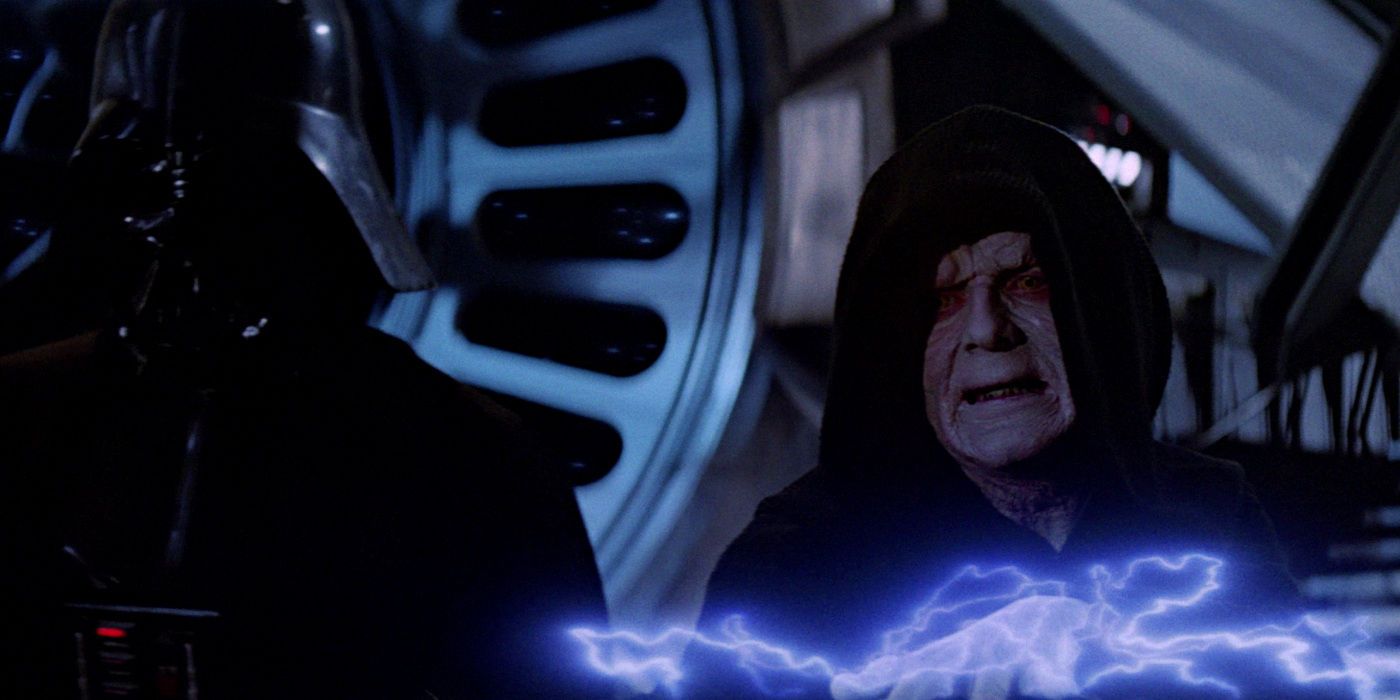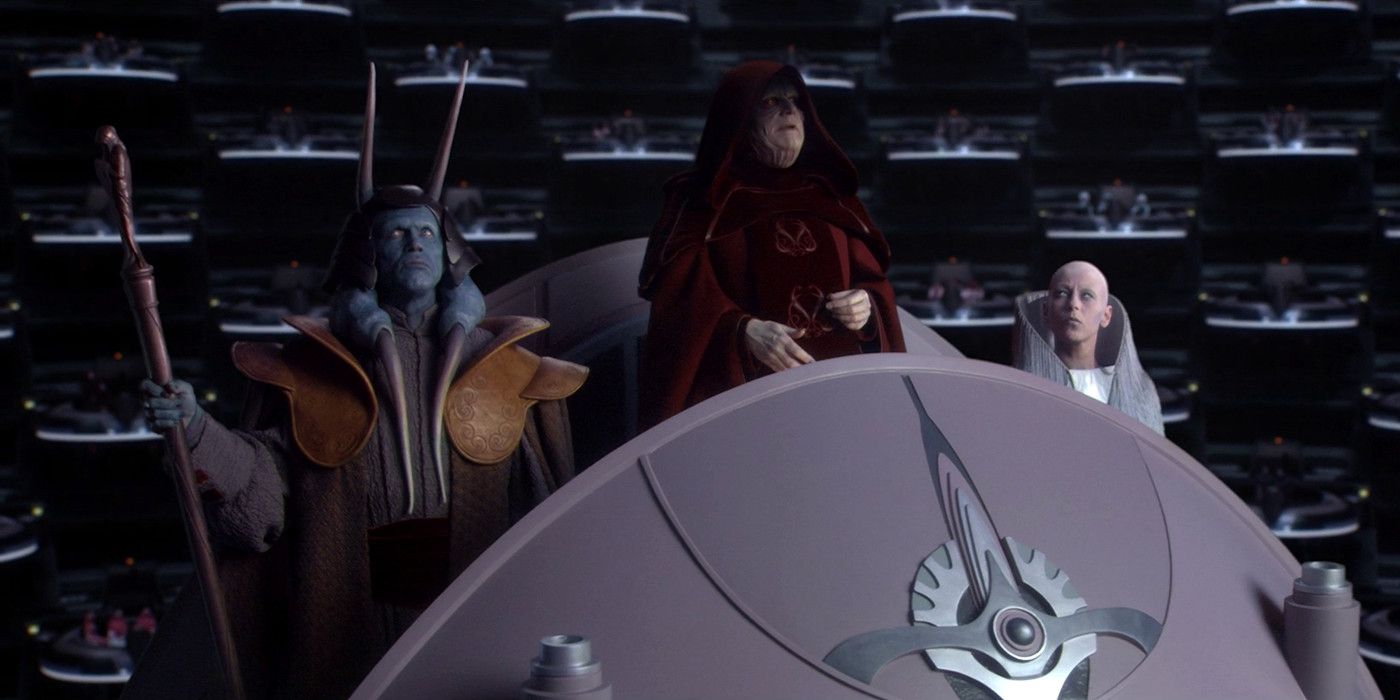Few movies changed the cultural landscape like the Star Wars series. The memorable dialogue, ships, locations and of course, the characters, all permeate the pop culture landscape from politics to internet memes. An alien civilization examining the remains of Earth might one day believe that the likes of Darth Vader and Luke Skywalker were actually some sort of deities!
Few characters, of course, have come to embody evil more than Emperor Sheev Palpatine (yep, that's his real name). First spotted in The Empire Strikes Back, clad in black and with eerie, sickly eyes, the character evokes famed baddies from Mephistopheles to Iago to Dr. Mabuse. But how did the character come about, and just how did he accomplish all the evil things he did? The Star Wars movies—notably the Prequel Trilogy—detail Palpatine’s rise to power, at least in the general strokes. But the Star Wars galaxy is a big place, and plenty of vital details get left out of the movies.
So then, grab a lightsaber, throw on a Sith robe, and prepare to cackle like a madman! Here are 15 Things You Need To Know About Emperor Palpatine.
15. He’s based on Nixon
Yes, Tricky Dick Nixon himself served as the inspiration for one of the most evil characters in cinematic history. Casual viewers often assume that George Lucas actually based the Empire on the Nazis, and ergo, the Emperor became an analog of Hitler. While the Empire certainly does bear similarities to the Nazi regime, keen viewers will also note that the Rebels have their share of fascist imagery too. For example, the awards ceremony at the end of A New Hope appears to take inspiration from the Nazi propaganda film Triumph of the Will. Critic Pauline Kael pointed out as much in her original Star Wars review, and never warmed to the series as a result.
But back to the Emperor. Lucas wrote Star Wars in the 1970s, at the height of the Watergate scandal. A staunch liberal, he based the Emperor and his rise to power on Richard Nixon. Like the former president, the Emperor rises to power as a demagogue in the midst of an orchestrated war (Clone Wars/Vietnam). Like Nixon, the Emperor curtailed freedoms and attacked enemies through shady—and illegal—dealings. The Galactic Civil War between the Rebels and the Empire mirrors the culture war that erupted in the United States during Nixon’s presidency.
14. He was not intended to be a Sith Lord
While George Lucas has always maintained that he wrote the full story of both the Original Trilogy and Prequel Trilogy during the 1970s, the truth is a bit more complicated. Lucas’ story had only vague references to galactic events surrounding the rise of the Emperor and Darth Vader, and the Star Wars creator made up ideas as he went along. In Lucas’ original conception, the Emperor was simply a corrupt politician, not a Sith. Doubtful fans can read the facts for themselves in several early script drafts of both Star Wars and The Empire Strikes Back floating around here on the internet.
When Lucas came up with the idea of combining Anakin Skywalker with Darth Vader (no, they weren’t originally the same person), Vader’s role as a Sith and his path to corruption took on a greater role in the saga. To compensate, Lucas reconceived the Emperor as a Sith Lord himself, and imagined that Palpatine had risen to power, in part, by seducing Anakin into becoming Darth Vader. This basic premise would only make it into the Original Trilogy in the broadest of concepts, thought it would later become the backbone of the Prequel series.
13. He was originally played by a monkey
Yes, really.
Just what did a Sith Lord look like? Lucas & company faced that question during the production of The Empire Strikes Back, when the script included a cameo appearance by the much-discussed Emperor. Nobody had even seen what Darth Vader looked like out of his cybernetic suit, so the production had to do a bit of improvising. Lucas, along with Empire director Irvin Kershner and screenwriter Lawrence Kasdan, decided that the Emperor should look mysterious and sufficiently creepy.
The production came up with an odd method to realize the character. An older actress wore heavy make-up to film the role, which was then combined with the superimposed eyes of a chimpanzee! The combination of the eyes and aged figure gave the character an unholy feel, augmented by the sublime vocal delivery of actor Clive Revill, who overdubbed the character’s lines. For Return of the Jedi, Lucas and director Richard Marquand cast the unknown Shakespearian actor Ian McDermid in the part, as the film would feature the Emperor in a more prominent role.
12. He studied with Darth Plagueis
Revenge of the Sith introduced one of the most talked about and fascinating concepts in the Star Wars canon. In a notorious opera scene, Palpatine and Anakin Skywalker discuss the Sith Lord Darth Plagueis, a mysterious figure who could command the Force to create life. Though the film does not make anything explicit, Lucas intended the character of Plagueis to be the master of Darth Sidious (Palpatine).
Further details of the life of Darth Plagueis have since come to light in books, comics and other media. Like Palpatine, Plagueis lived on the planet Naboo. Plagueis believed that he could eventually achieve the Sith goal of dominating the galaxy and destroying the Jedi through immortality. Thus, he and his apprentice Palpatine began working to discover the secrets to life itself. Unfortunately, after Sidious learned this knowledge from Plagueis, the apprentice began searching for a pupil of his own. When Palpatine discovered the young Darth Maul, he killed Plagueis in his sleep, in keeping with Sith edicts that only a master and an apprentice Sith can exist at any one time (aka the Rule of Two).
11. He worked with—and battled—the Nightsisters
Though the films tend to focus more on the Jedi and Sith, a number of other Force-wielding characters and orders exist throughout the Star Wars galaxy. Among them, the so-called Nightsisters live on the planet Dathomir and practice Force manipulation as a form of witchcraft.
With Palpatine hungry for power, he allied himself with the Nightsisters to gain more knowledge of the Dark Side so that he could usurp his master, Darth Plagueis. Palpatine allied himself with Tazlin, the leader of the Nightsisters, and took a special interest in her young son Maul. Palpatine would later abduct Maul to train as his apprentice, and Tazlin vowed revenge for this betrayal. Her vendetta against Palpatine would extend to the Clone Wars, when she would finally stage a plot for revenge. She would later make attempts on the life of Palpatine’s new apprentice Count Dooku/Darth Tyrannus. Dooku and Palpatine responded by invading Dathomir, eventually killing Tazlin.
10. Lucas intended him to be Anakin’s father
The virgin birth of Anakin Skywalker has long puzzled and titillated Star Wars fans. Just how was it possible? And what did it all mean?
Lucas originally planned to reveal even more about Anakin and Palpatine in Revenge of the Sith. Early script drafts feature a pivotal scene in which Palpatine reveals that he had used the knowledge he gained from Darth Plagueis to manipulate the Force and create life. Palpatine had selected Shmi Skywalker as a host, and used the Force to conceive Anakin Skywalker as her child. In these early drafts of Sith, Palpatine uses this revelation to bait Anakin into turning to the Dark Side. Palpatine reveals that, in essence, he is Anakin’s father.
Lucas ultimately backed away from this plot twist, preferring ambiguity instead. Lucas intended Anakin’s fall to mirror that of Luke in the Original Trilogy, though Anakin would choose the opposite path from his son. The final version of Revenge of the Sith instead hints at Palpatine’s role in Anakin’s conception, and focuses instead on Anakin’s love for Padme as the catalyst for his fall from grace.
9. He converted the Jedi temple into his palace
Viewers who watch the Prequel Trilogy and Sequel Trilogy in succession often have a few pressing questions about the story that bridges the two trilogies. Just what happened after Palpatine seized power and killed all the Jedi? What about the Jedi Temple, and its vast archives of Jedi history and knowledge of the Force? What happened to all of that?
The answer is simple: Palpatine. Following the genocide of the Jedi Order, Palpatine opted to use the vacant Jedi Temple as his personal palace. That gave him direct access to the Jedi archives, and allowed him to destroy or hide vital elements of their history. Even more twisted, the Jedi had selected that particular piece of Coruscant real estate because it had also been the site of an ancient Sith shrine! The Dark Side energy that swirled along the site concerned the Jedi, so they built the temple there to keep the shrine hidden and neutralized.
The location would one day become a detriment to the Jedi, unfortunately. With Palpatine residing on Coruscant, first as a Senator, and later, as Chancellor, he manipulated the Dark Force of the shrine to cloud the visions of the Jedi. With their powers of the Force diminished, the Jedi Order could not foresee the destruction of the Clone Wars--or Palpatine’s plans to raze the Order altogether.
8. He ordered the destruction of his homeworld Naboo
With the destruction of the first Death Star, Palpatine began to fear for his safety, especially as his apprentice Darth Vader became more and more obsessed with finding Luke Skywalker. At some point, the Emperor began developing contingency plans in case Vader should turn on him, or in case his reign as Emperor should come to an unceremonious end.
For that reason, Palpatine developed Operation Cinder. Determined to maintain the Sith's control over the Empire, Palpatine gave orders that in the event of his death, the Empire should begin to spread propaganda across the galaxy that he had survived. In the aftermath of the Battle of Endor, the remaining Imperial officers began to do just that. They also received secret orders from the Emperor to attack key planets in the Empire, beginning with Palpatine’s homeworld of Naboo. Within a month, the Empire had installed climate disruption satellites around Naboo that manipulated the planet’s weather. As storms, hurricanes and other natural disasters disrupted and threatened all life on the planet, Princess Leia and Lando Calrissian led Rebel forces in liberating the planet. Operation Cinder failed, and Naboo fell under jurisdiction of the New Republic.
7. He had research stations set up all over the Galaxy
For the most part, the origins of the Force, the Jedi, and the Sith remain clouded in mystery. That same cloud of the unknown hovers over the characters of the Star Wars galaxy, including Palpatine. While the Emperor set out to begin ruling his Empire, he also took advantage of his newfound power to further explore the Force. Palpatine decided to send out secret research teams to distant parts of the galaxy to study the Force and develop new weapon technologies.
In the confusion following the Battle of Endor, the effect of these research stations began to surface. A cult known as the Acolytes of the Beyond emerged as a group of Sith-worshiping religious fanatics obsessed with finding the belongings of Darth Vader. Moreover, these research stations and labs also helped facilitate the rise of the First Order some 25 years later. As the Republic hunted down the remnants of the Empire, Imperial officers fled to the furthest regions of the galaxy. There, they regrouped and developed new technologies like Starkiller Base for their eventual attack on the Republic.
6. He had replacements for Vader lined up
Given that Palpatine killed his own master, Darth Plagueis, perhaps it should come as no surprise that the Emperor had little in the way of trust for even his closest associates, including Darth Vader. Therefore, the Emperor began searching out Force-sensitive infants all over the galaxy, creating a new Dark Side order known as the Inquisitors.
The Inquisitors would rise in profile some ten years following the fall of the Jedi. As the Rebel Alliance formed and began staging attacks on the Empire, Palpatine tasked Darth Vader and the Inquisitors with eliminating the Rebellion. They soon discovered that a number of Jedi had escaped death during the time of Order 66. Palpatine also recognized Darth Vader’s mental instability, and planned to use the Inquisitors as a defense force, should Vader turn on his master. He also used the Inquisitors as pressure for Vader to maintain loyalty, especially after Anakin Skywalker’s former apprentice Ashoka Tano emerged as a Rebel agent.
5. He was behind the creation of the clone army
The creation of the Republic clone army during the events of Attack of the Clones puzzled the Jedi Order, who had not foreseen its creation. It also puzzled viewers, who were wondering just who master Sifo-Dyas was, and how the clone army came to be.
Just before the invasion of Naboo, Sifo-Dyas began arguing with the rest of the Jedi Order. He feared that growing tensions within the Republic could lead to a full-blown war, which even the Jedi could not contain. Taking matters into his own hands, he contacted the planet Kamino and commissioned a clone army in the name of the Republic. His fellow Jedi Count Dooku learned of Sifo-Dyas' actions, and following the failed invasion of Naboo, he turned his back on the Jedi order. Dooku later joined the Sith alongside Palpatine, and the two orchestrated Sifo-Dyas' death. Dooku also erased the records of the planet Kamino from the Jedi Archives, and he and Palpatine delivered the funds Kamino required to begin construction of the army. Years later, a chance discovery by Obi-Wan Kenobi brought the army into active duty, and allowed Palpatine to manipulate the galaxy into fighting the Clone Wars.
4. His appearance in the Prequels is a comment on a number of Bush-era figures
Though George Lucas based Palpatine on Richard Nixon and his rise to power, with a spattering of Hitler-Nazi flavor to boot, Lucas also used the character as a comment on the political state of the US during the Prequel Trilogy. The Iraq War broke out in 2003, less than a year after Attack of the Clones hit cinemas. The subsequent final installment of the Prequel Trilogy, Revenge of the Sith, released in 2005 and used a number of post-9/11 style images to evoke the mood.
More specifically though, Palpatine’s rise to Emperor took on a new dimension. Much as the 9/11 attacks and Iraq War had allowed President George W. Bush and his deputies to expand their authority, Palpatine used the Battle of Geonosis and subsequent Clone Wars to expand his own. Furthermore, much as government higher-ups were revealed to have condoned torture and other atrocities, Palpatine allowed Republic stormtroopers to commit more brutal attacks, like the genocide of the Jedi. Lucas used Palpatine’s rise to illustrate how corruption works, and how the benevolent Republic could be twisted into becoming the evil Empire.
3. His name comes from Taxi Driver
George Lucas and his former movie brat friends like to work subtle in-jokes into their films as references to one another. For example, Harrison Ford plays Col. Lucas in Francis Ford Coppola’s Apocalypse Now. Coppola and Lucas are, of course, good friends, and the casting of Ford as a character with the same name was intended as a nod to Lucas. Likewise, Lucas included alien creatures that resemble the title character from E.T. The Extra-Terrestrial in The Phantom Menace. Lucas’ close friend Steven Spielberg directed E.T., which also contains a reference to Star Wars toys, and features a costumed child as Yoda.
Lucas intended Palpatine’s name as a subtle wink at his pal Martin Scorsese's film, Taxi Driver. That movie features a politician by the name of Palatine who figures into the story. Lucas simply inserted a “p” to the name to create his own character. Likewise, in Revenge of the Sith, Palpatine draws his lightsaber from inside his sleeve, which also refers to Taxi Driver, where Robert De Niro's character does the same with his gun.
2. Ian McDermid based the Emperor's voice on Japanese thespians
During filming of The Empire Strikes Back, George Lucas hadn’t given much thought to how the Emperor would be portrayed in future installments. At that time, Lucas had intended to have the third film in his trilogy end with the death of Darth Vader, and have Luke Skywalker set out to find his lost twin sister, Nellith. A proposed Sequel Trilogy would chronicle Luke & Nellith seeking out the Emperor, and finally liberating the galaxy. As production on Empire went way over budget and almost bankrupted Lucas, he decided to conclude the Star Wars saga with Return of the Jedi, and have both the Emperor and Vader die in the final battle.
Director Richard Marquand cast Ian McDermid as the Emperor because of the actor’s vocal similarities to Clive Revill, who voiced the character in Empire. McDermid found the role intriguing, though he convinced Lucas and Marquand to let him devise a vocal style of his own. McDermid, a trained thespian, decided on using a Japanese technique of projection. The method gave McDermid a low, creaky voice, which he found appropriate for the character, one that would become one of the most iconic character voices in all of cinema.
1. He becomes a lauded figure after Return of the Jedi
Return of the Jedi ends with the death of the Emperor, the destruction of Death Star II, and the celebration of the galaxy's liberation. 30 years later, however, the First Order rises, emulating the Empire’s style and government and launching an attack on the Republic. So what gives? Just where did this First Order come from?
The Force Awakens elected not to dive too deep into an expository exploration of the political state of the galaxy, though subsequent, canonical sources do. As it turns out, following the establishment of the New Republic, political gridlock grinds all Senate progress to a halt. The lack of a centralized government causes a number of problems for the galaxy, especially after Imperial sympathizers appear within the governing body. Palpatine himself is still debated, though a number of “Centrists” consider him a wise, if flawed, leader, one who didn’t let political squabbles get in the way of action. Darth Vader remains a hated figure, but the late Emperor is denounced as a mad dictator less and less as time passes. As nostalgia for the Empire grows, so too does the Emperor’s reputation. These sentiments allow the First Order to emerge from hiding and sign a non-aggression treaty with the Republic. The neo-Imperial order later breaks this treaty by destroying the Senate homeworld of Hosnian Prime, of course, and war once again threatens to destroy the galaxy.
---
What else should fans know about Emperor Palpatine? Sound off in the comments!
KEY RELEASE DATES
- Star Wars: Rogue One / Rogue One: A Star Wars Story release date: Dec 16, 2016
- Untitled Han Solo Star Wars Anthology Film release date: May 25, 2018
- Star Wars 8 / Star Wars: Episode VIII release date: Dec 15, 2017

